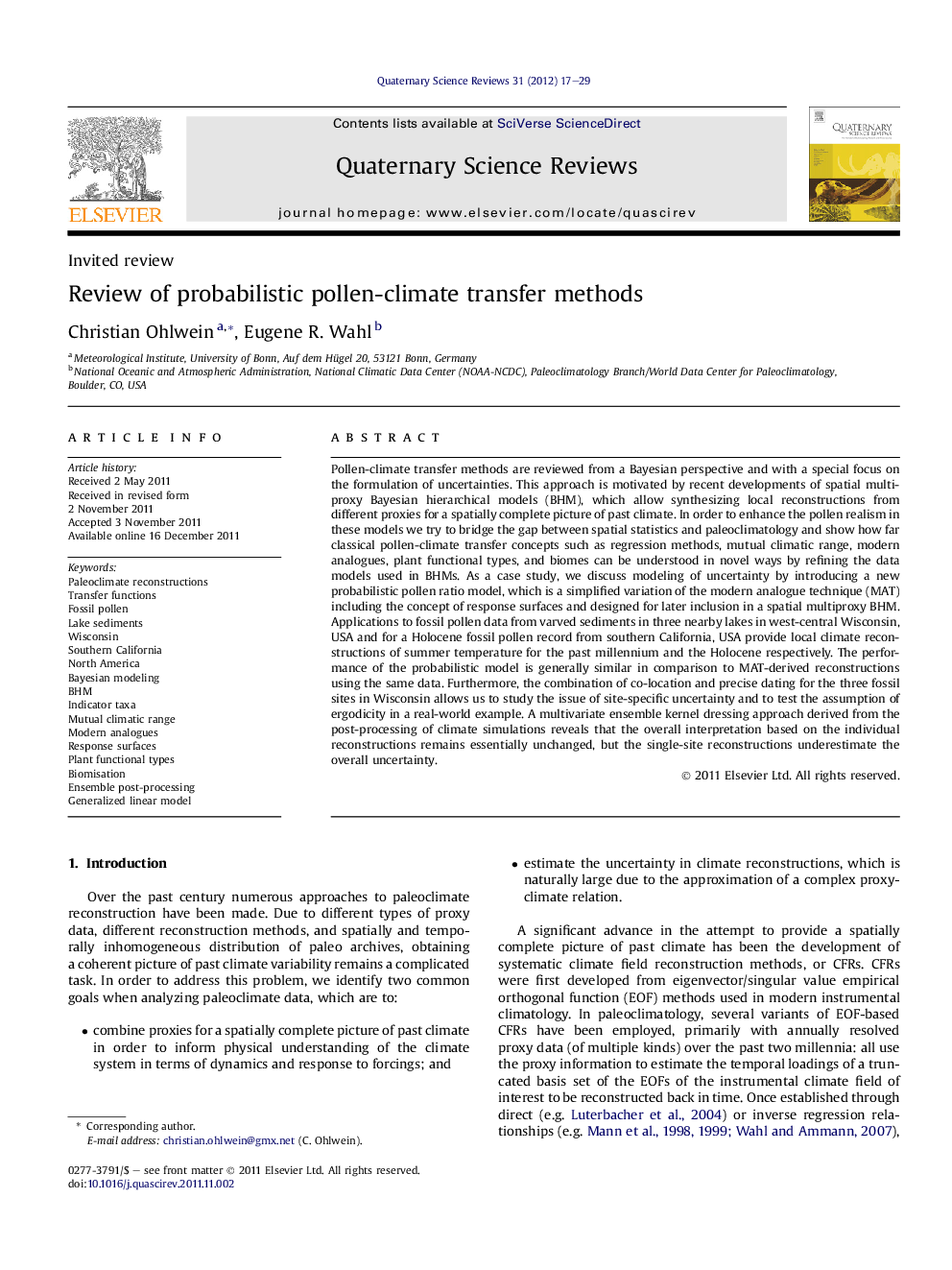| Article ID | Journal | Published Year | Pages | File Type |
|---|---|---|---|---|
| 4735505 | Quaternary Science Reviews | 2012 | 13 Pages |
Pollen-climate transfer methods are reviewed from a Bayesian perspective and with a special focus on the formulation of uncertainties. This approach is motivated by recent developments of spatial multi-proxy Bayesian hierarchical models (BHM), which allow synthesizing local reconstructions from different proxies for a spatially complete picture of past climate. In order to enhance the pollen realism in these models we try to bridge the gap between spatial statistics and paleoclimatology and show how far classical pollen-climate transfer concepts such as regression methods, mutual climatic range, modern analogues, plant functional types, and biomes can be understood in novel ways by refining the data models used in BHMs. As a case study, we discuss modeling of uncertainty by introducing a new probabilistic pollen ratio model, which is a simplified variation of the modern analogue technique (MAT) including the concept of response surfaces and designed for later inclusion in a spatial multiproxy BHM. Applications to fossil pollen data from varved sediments in three nearby lakes in west-central Wisconsin, USA and for a Holocene fossil pollen record from southern California, USA provide local climate reconstructions of summer temperature for the past millennium and the Holocene respectively. The performance of the probabilistic model is generally similar in comparison to MAT-derived reconstructions using the same data. Furthermore, the combination of co-location and precise dating for the three fossil sites in Wisconsin allows us to study the issue of site-specific uncertainty and to test the assumption of ergodicity in a real-world example. A multivariate ensemble kernel dressing approach derived from the post-processing of climate simulations reveals that the overall interpretation based on the individual reconstructions remains essentially unchanged, but the single-site reconstructions underestimate the overall uncertainty.
► Classical pollen-climate transfer methods are linked to spatial multi-proxy BHM. ► A pollen-ratio model performs similar to MAT for summer temperature reconstruction. ► Approximately 1000-yr varved sediment records from west-central Wisconsin, USA. ► Holocene pollen records from southern California, USA. ► Single-site reconstructions are coherent but underestimate cross-site uncertainty.
